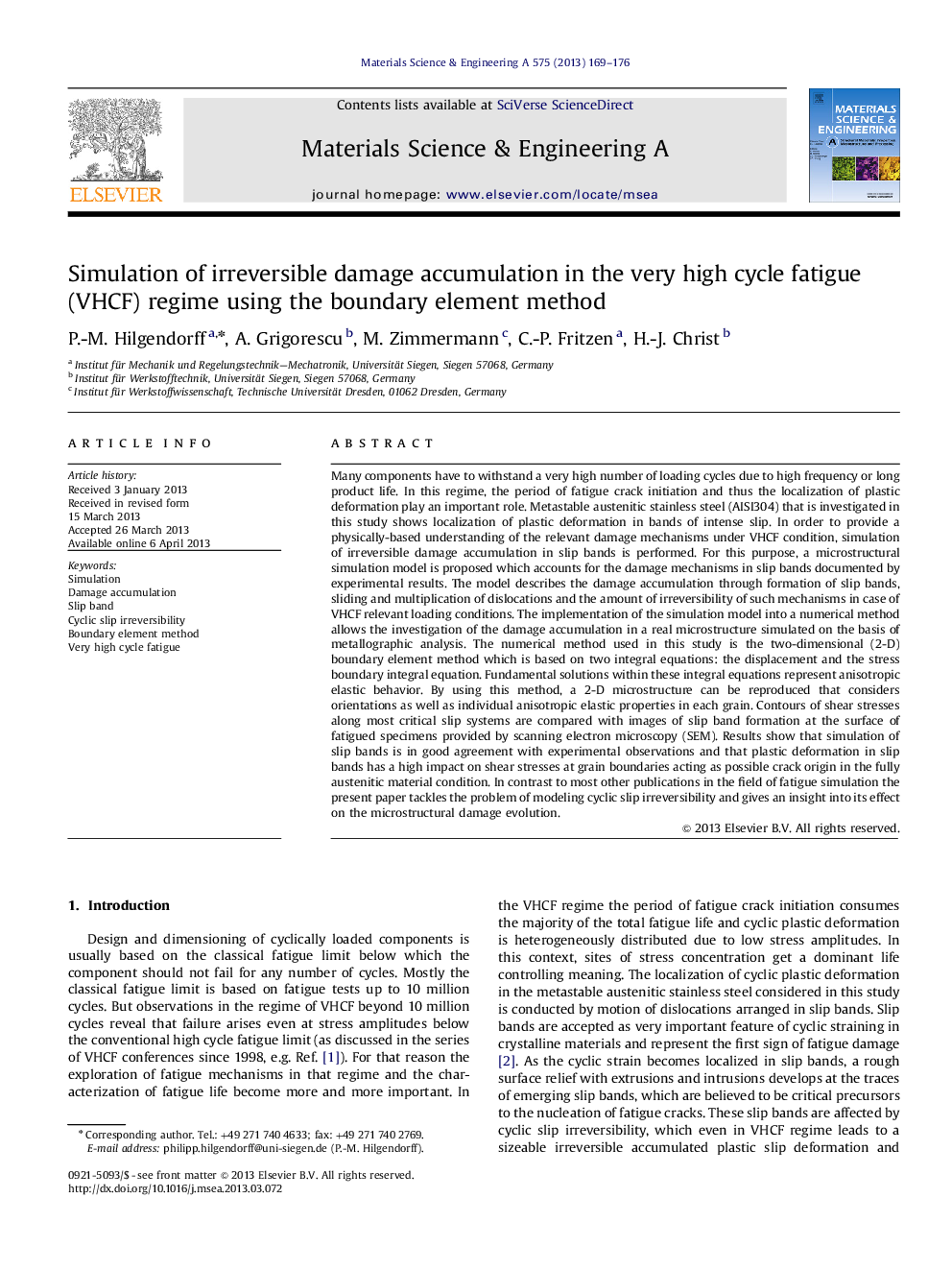| کد مقاله | کد نشریه | سال انتشار | مقاله انگلیسی | نسخه تمام متن |
|---|---|---|---|---|
| 1576230 | 1514768 | 2013 | 8 صفحه PDF | دانلود رایگان |

Many components have to withstand a very high number of loading cycles due to high frequency or long product life. In this regime, the period of fatigue crack initiation and thus the localization of plastic deformation play an important role. Metastable austenitic stainless steel (AISI304) that is investigated in this study shows localization of plastic deformation in bands of intense slip. In order to provide a physically-based understanding of the relevant damage mechanisms under VHCF condition, simulation of irreversible damage accumulation in slip bands is performed. For this purpose, a microstructural simulation model is proposed which accounts for the damage mechanisms in slip bands documented by experimental results. The model describes the damage accumulation through formation of slip bands, sliding and multiplication of dislocations and the amount of irreversibility of such mechanisms in case of VHCF relevant loading conditions. The implementation of the simulation model into a numerical method allows the investigation of the damage accumulation in a real microstructure simulated on the basis of metallographic analysis. The numerical method used in this study is the two-dimensional (2-D) boundary element method which is based on two integral equations: the displacement and the stress boundary integral equation. Fundamental solutions within these integral equations represent anisotropic elastic behavior. By using this method, a 2-D microstructure can be reproduced that considers orientations as well as individual anisotropic elastic properties in each grain. Contours of shear stresses along most critical slip systems are compared with images of slip band formation at the surface of fatigued specimens provided by scanning electron microscopy (SEM). Results show that simulation of slip bands is in good agreement with experimental observations and that plastic deformation in slip bands has a high impact on shear stresses at grain boundaries acting as possible crack origin in the fully austenitic material condition. In contrast to most other publications in the field of fatigue simulation the present paper tackles the problem of modeling cyclic slip irreversibility and gives an insight into its effect on the microstructural damage evolution.
Journal: Materials Science and Engineering: A - Volume 575, 15 July 2013, Pages 169–176